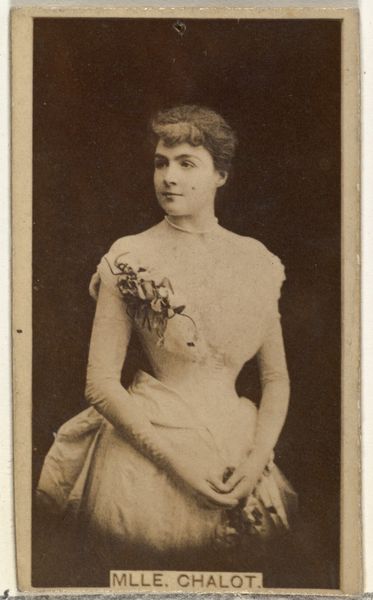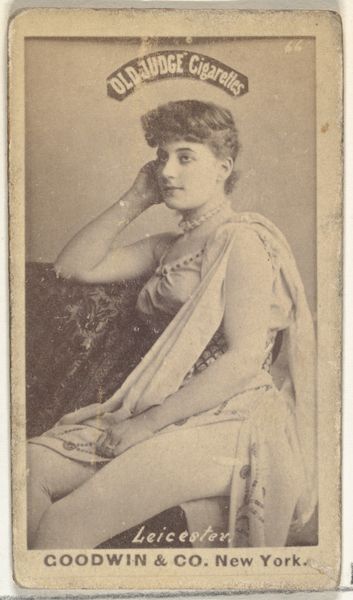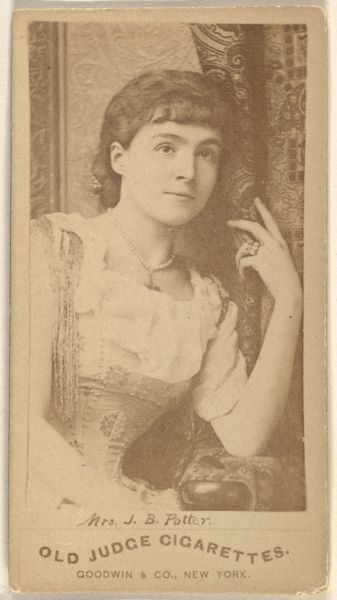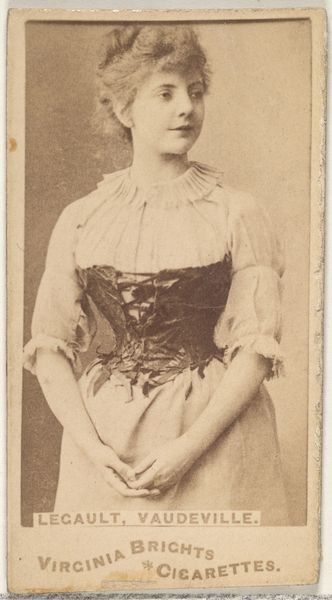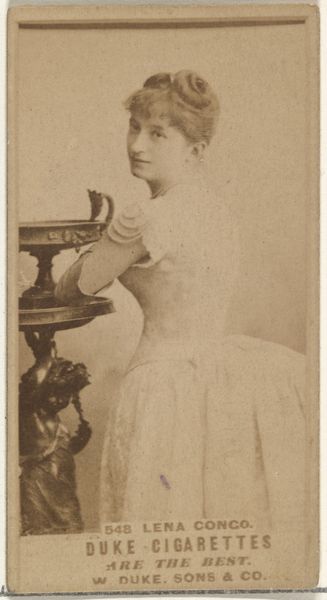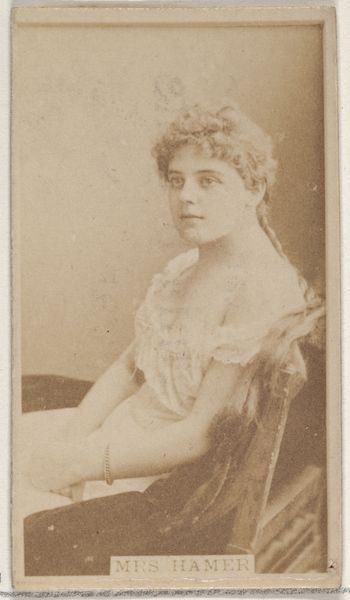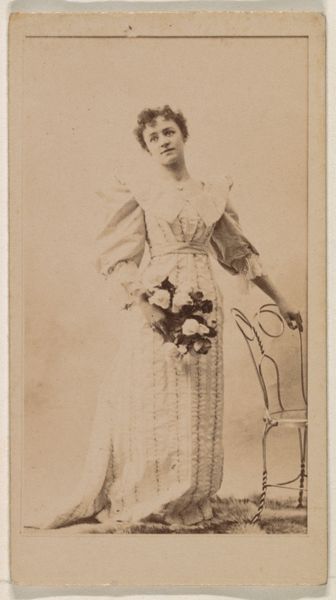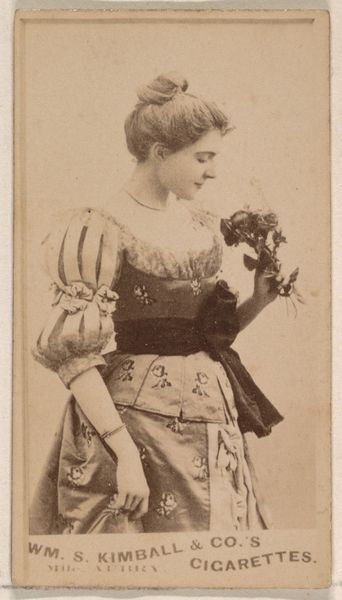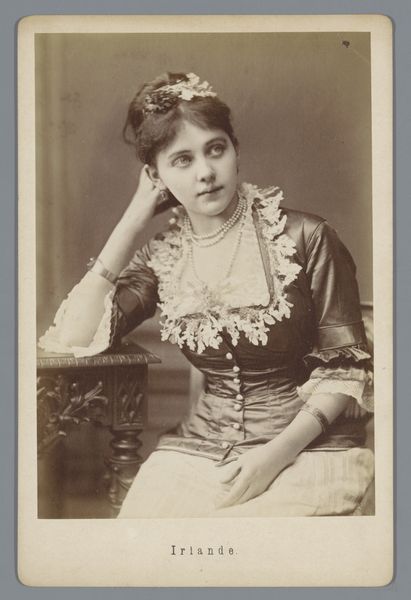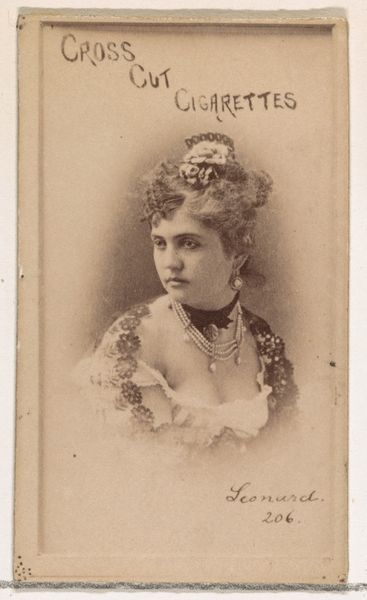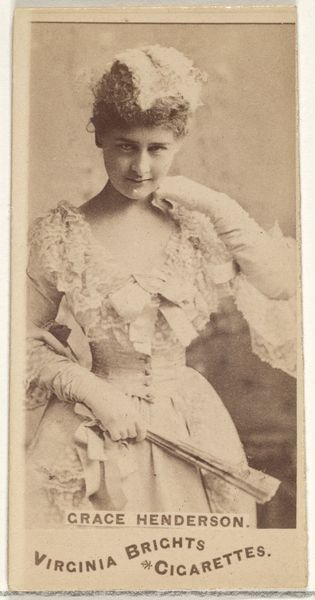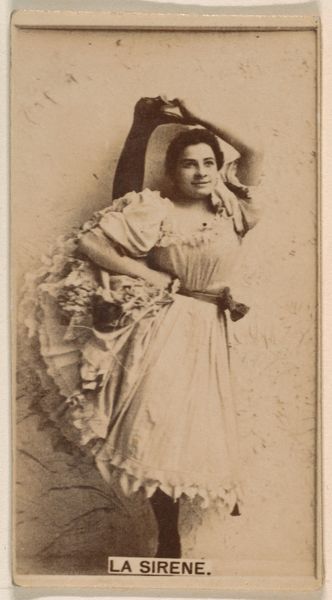
Adel Depois, from the Actresses series (N67) promoting Dixie Cigarettes for Allen & Ginter brand tobacco products 1885 - 1893
0:00
0:00
drawing, print, photography
#
portrait
#
drawing
# print
#
photography
#
historical photography
#
19th century
#
realism
Dimensions: Sheet: 2 5/8 × 1 1/2 in. (6.7 × 3.8 cm)
Copyright: Public Domain
Curator: Looking at this, my immediate impression is one of demure restraint. The soft lighting, the sitter's composed posture, it all speaks of a certain idealized femininity prevalent at the end of the 19th century. Editor: And it’s crucial to understand that this image of "Adel Depois" exists within a larger historical context. It’s one of the Actresses series, N67, which was printed between 1885 and 1893, to promote Dixie Cigarettes, made by Allen & Ginter tobacco products. The print is located here at the Met. Curator: Right. Knowing it was mass-produced as part of a promotional campaign does shift the way we see it. It was meant to sell a product through this woman’s image, not necessarily celebrate her. What does she represent, what ideals does she embody that the manufacturers believed would resonate with consumers? Editor: Exactly. The image functions as a commodity in itself, embedding cultural values about beauty and desirability within the act of consumption. We might also ask who was targeted? White, middle-class male smokers likely; What aspirations about gentility and leisure are projected onto smoking itself? The fact that "Dixie Cigarettes" alludes to the American South adds another layer related to race and identity in post-Reconstruction America. Curator: And the format - this small, almost pocket-sized image - allows for widespread dissemination. These tobacco cards were essentially early forms of advertising. But it raises a few questions. Do we know who this woman was? Was "Adel Depois" her stage name or the name that she adopted to align herself with a consumer identity? And who was she representing, if not a person. Editor: While the Actresses Series features other notable women who were genuine celebrities and recognizable on sight, it is, unfortunately, quite difficult to locate any confirmed information about Adel Depois as an individual outside the context of this print and related sets produced for Allen & Ginter tobacco products. But whether Adel Depois was a well-known figure or someone the Tobacco company deemed fit to play the part for consumer projection, that is not necessarily the point. What is significant to me is what such imagery reveals about gendered commodification. Curator: A really insightful discussion – pushing us to consider how advertising constructs and circulates ideas about identity through these mass-produced images. Editor: Precisely. It highlights how objects in museums, like this print, hold stories about societal values, desires, and often, hidden power structures.
Comments
No comments
Be the first to comment and join the conversation on the ultimate creative platform.
